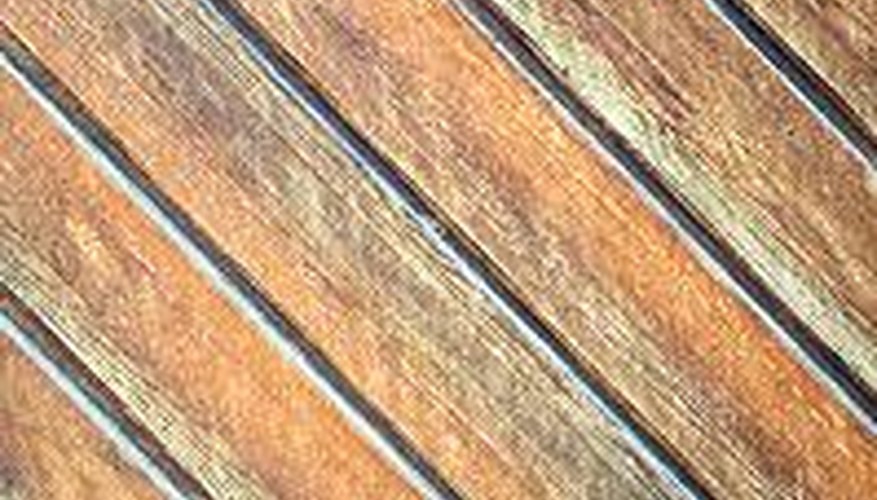Hardwood flooring comes in planks, and the direction you choose to run them has an important visual impact. Running them parallel to a wall usually minimises this impact while running them diagonally makes them stand out. A diagonal installation is more difficult than a parallel one, especially if the floor has an obstruction, such as an island, but it makes a more stable floor. It will be more expensive because it produces more waste.
Visual Impact
When you walk into a room with a hardwood floor, your eyes tend to follow the direction of the flooring and focus on any features at the end of the path. The boards can make a room appear longer or shorter, depending on whether they run parallel or perpendicular to the longer wall. Diagonal boards draw attention to the corners and de-emphasise the walls. This can be a great advantage in a room with a corner feature like a wood stove or alcove. A diagonal floor in an alcove can also provide contrast for a parallel floor in the main room.
- When you walk into a room with a hardwood floor, your eyes tend to follow the direction of the flooring and focus on any features at the end of the path.
- The boards can make a room appear longer or shorter, depending on whether they run parallel or perpendicular to the longer wall.
Installation Procedures
Diagonal floors are more difficult to install than parallel ones. Instead of starting along a wall, you usually have to scribe a line down the middle of the floor, from corner to corner, and run the first course along the line. The first few courses have to be top-nailed, leaving nail holes to camouflage. Cut all the butt ends of the boards at an angle, and as you approach the corners of the room, the last few boards can be difficult to nail in. Like the first few courses, you have to top-nail the corner pieces.
- Diagonal floors are more difficult to install than parallel ones.
- The first few courses have to be top-nailed, leaving nail holes to camouflage.
Stability
On most floors with a plywood subfloor, the plywood runs perpendicular to the joist direction. To ensure stability, flooring installers recommend running the flooring perpendicular to the joists, but this means the floor boards will run in the same direction as the plywood and raises the possibility of the joints between boards matching up with the plywood seams. When this happens, the nails don't hold the boards securely and they end up being spongy or squeaking. You can avoid this by laying an extra layer of plywood, but a less expensive option is to run the boards diagonally.
- On most floors with a plywood subfloor, the plywood runs perpendicular to the joist direction.
- To ensure stability, flooring installers recommend running the flooring perpendicular to the joists, but this means the floor boards will run in the same direction as the plywood and raises the possibility of the joints between boards matching up with the plywood seams.
Cost
If you hire a contractor for a diagonal installation, be prepared for higher fees because of the extra time it takes to cut boards and install them at an angle. The job will cost more even if you do it yourself, though, because of the wood you will waste on the end cuts. When doing a parallel installation, you can use the offcut from the end of a row to start the next one without further cutting, but when doing a diagonal one, you have to cut a new angle. The small pieces you throw away can push the material cost for the project 5 to 10 per cent higher.
- If you hire a contractor for a diagonal installation, be prepared for higher fees because of the extra time it takes to cut boards and install them at an angle.
